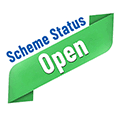The Deendayal Antyodaya Yojana – National Rural Livelihoods Mission (DAY-NRLM) is the flagship program of the Ministry of Rural Development. This mission promotes poverty reduction by building strong grassroots institutions among the rural poor, particularly women, enabling them to access a range of financial services and livelihood opportunities. Formerly known as the Swarnajayanti Gram Swarozgar Yojana (SGSY), NRLM was restructured and renamed DAY-NRLM effective from March 29, 2016. The mission adopts a demand-driven strategy, allowing states the flexibility to design state-specific poverty reduction action plans while focusing on outcomes, targets, and time-bound delivery.
Subscribe our Channel
Core Values
- Inclusion:
Emphasizing the meaningful participation of the poorest in all processes. - Transparency and Accountability:
Ensuring all processes and institutions operate with openness. - Ownership:
Empowering the poor and their institutions to play a key role in planning, implementation, and monitoring. - Community Self-Reliance:
Fostering self-dependence and the ability to create sustainable livelihoods.
Benefits
DAY-NRLM targets approximately 7 crore rural poor households across India by forming self-managed Self Help Groups (SHGs) and federated institutions. The mission supports:
- Social Mobilization and Capacity Building:
Training and capacity building for managing institutions, enhancing credit absorption, and improving livelihoods. - Financial Inclusion:
Linking SHGs with banks, providing revolving funds, and offering interest subvention on loans (covering the difference between bank lending rates and a benchmark of 7% per annum). - Livelihood Promotion:
Encouraging skill development, self-employment generation, and creating market linkages through rural self-employment institutes (RSETIs) and other support mechanisms. - Convergence:
Collaborating with various ministries and agencies for a comprehensive poverty reduction approach.
Implementation Strategy
NRLM is implemented in a mission mode with a focus on:
- Transitioning from allocation-based to demand-driven strategies.
- Setting clear targets and timelines.
- Continuous capacity building and skill development.
- Monitoring poverty outcomes at the district level with linkages to District Rural Development Agencies (DRDAs) and Panchayat Raj Institutions (PRIs).
Eligibility
- For SHGs:
- Must have been in active existence for at least 6 months with maintained books of accounts.
- Should follow the “Panchasutras” which include regular meetings, savings, inter-loaning, timely repayment, and up-to-date accounts.
- Must meet the grading norms as per NABARD guidelines.
- Additional Eligibility:
- Revived defunct SHGs that have been active for a minimum of 3 months may also be eligible.
- The mission supports innovative start-up industrial activities, new individual applicants, and new MSME units across rural areas.
Application Process
Online
-
Registration:
Visit the registration page at https://aajeevika.gov.in/en/member/register.- Fill out the mandatory fields including name, email ID, and contact number.
- Provide a username and set a password.
- Click on “Create New Account” to register.
-
Documentation:
Upload the required documents such as Aadhaar Number, Proof of Identity, Proof of Residence, Voter ID Card, and a passport size photo. -
Completion:
Once registered, you can log in and complete further applications and access the benefits provided under the mission.
Documents Required
- Aadhaar Number.
- Proof of Identity.
- Proof of Residence.
- Voter ID Card.
- Passport Size Photograph.
Frequently Asked Questions
- What is NRLM – Aajeevika?
NRLM – Aajeevika is the operational arm of DAY-NRLM focused on enhancing rural livelihoods through SHGs and federated institutions. - How is it different from Swarna Jyanti Swarozgar Yojana (SGSY)?
NRLM is a restructured and enhanced version of SGSY, with a stronger focus on demand-driven poverty reduction and improved institutional linkages. - What are the key features of NRLM?
Its key features include social mobilization, financial inclusion, livelihood promotion, convergence, capacity building, and interest subvention on loans. - Who is eligible for benefits under NRLM?
All poor rural households, particularly through self-managed SHGs and federated institutions, are eligible. - What are Institutions of the Poor (IOPs)?
IOPs refer to the federated structures of SHGs that empower the poor through collective action. - Is NRLM only for women?
Although the focus is on empowering women, NRLM supports all rural poor households. - What measures has NRLM taken towards financial inclusion?
It facilitates bank linkages, provides revolving funds, and offers interest subvention on loans. - What is a Micro Plan of an SHG?
A Micro Plan is a detailed plan developed by an SHG outlining its objectives, resources, and strategies for improving livelihoods. - What is the Aajeevika Skills Development Programme (ASDP)?
ASDP is an initiative under NRLM that focuses on skill development and placement for rural youth. - How does NRLM support farm-based livelihoods?
It provides capacity building, market support, and infrastructure development to enhance the productivity and income of farm-based activities.

